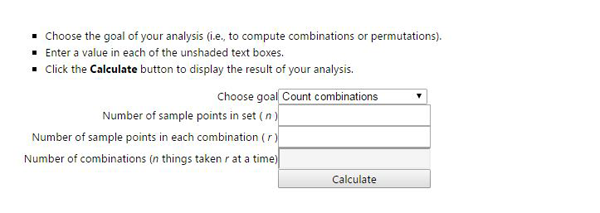The Experience Business - From a Web of Pages to a Web of Experiences

We're in a major period of transition, as our Web of pages shifts to become a Web of experiences. The 'last millisecond' and the behaviors it triggers have become less a consideration and more the norm in this always-on, customer-first universe. Consumers don't just expect - they demand more spot-on experiences and personalized journeys from the brands they frequent. They don't want websites. Websites are boring - necessary evils in their fully integrated lives. Web experiences, though, are something special. That's what pulls consumers in and inspires purchases, viral chatter and other key actions. A Web experience is something you - as a consumer - can climb on board for, feel good about or get behind. It's something you relate to on a bigger level.
This shouldn't surprise us - we're in the experience business and have been for a while. The next phase? Optimizing those experiences with our collective eye on creating perfect experiences. It's doable. Since you have a site, you already have the data, the content and the context - three key pieces to building a Web experience. The next step is to tap into the brave new user experience (UX), design and tech worlds to create something even bigger and better - a true experience.
The World of New UX - and the New World of Experiences
Brian Solis, a thought leader in the space, unpacks this even more in his book, X: The Experience When Business Meets Design. He mentioned that this is "...a new era of business in which your brand is defined by those who experience it."
Your job, intrepid marketer, is to understand how customers experience your brand and work to define those experiences to benefit both sides. No longer are great products enough to win over consumer sentiment, he explains; instead, we all need to be razor-focused on building and cultivating the most meaningful experiences possible - experiences that stretch across all of our brand platforms.
Why does it matter now? Because, we're in a website crisis, really. On the average website, nearly two in five users don't complete even the simplest tasks. Design and UX are issues. The simplest transaction is loaded with steps and page after irrelevant page of info. It's not surprising that so many people ditch their carts before buying their shoes, downloading their music, or booking their flights - they're just not good experiences. They're not meant to be. They're meant to be websites. And the average person will give a website about 60 seconds before calling it quits - that last millisecond is a powerful pull.
How We'll Shift to a Web of Experiences
This goes beyond just finding (or not finding) our way through cluttered and poorly organized pages. Once upon a time, websites provided dazzling new ways to communicate our brands. They were cutting-edge methods that boasted transactional experiences without the hassle - things that, prior to the Internet, we had to do in person or over the phone (the horror!).
Fast-forward two decades, and now, we casually toss around the term "digital experience" to describe the exchanges that have become utilitarian in nature - for example, booking a flight, contacting customer support, ordering new sneakers, paying a credit card bill. They're totally transactional, but still, we assign the term "experience" to them, too. Because, today, everything's become a brand experience.
But, is everything an experience? Within a typical website, there's a set construct - it's a Web PAGE, after all. As technology has evolved, and we've seen things like CSS, Angular, and app-development take center stage, a new path has begun to take shape - and it's filled with opportunities for more elegant experiences. A good example? We can accomplish things on one screen that once took many - gone are the days when users had to be catapulted from one section of a site to another to download PDFs, check size charts, and review dates and times. We can now engage consumers in ways that truly reflect the way they do things in "real life." It's human-centered design, explains Solis, and there's a real humanity to it that adds the qualities of authenticity and experience.
Challenges Behind Creating an Amazing Web of Experiences
I recently had a chance to sit down with a large media brand that shared with me their plans for the next iteration of their website - and it's really cool. The new visually striking homepage is comprised of modular content blocks or tiles. Tile-based design is growing in popularity among designers, and many brands are testing it on their websites with great results (check out Thomas Haustein's Pinterest board to see some great tile-based design). But, in this case, what's so interesting is not so much the design or tiles themselves, but rather the engine behind the experience they want to deliver.

Some design lends itself better to personalization than others do, but something as modular and, therefore, flexible as a tile-based UX provides seemingly unlimited abilities to personalize. In the case of my media-company example, there is no shortage of tiles - content with offers, stories, programming suggestions and much more. So, how do they decide which tiles appear when and to whom given the context variables of the interaction (such as device type)?
The challenge, when it comes to any kind of personalization, lies with the 'decision' - how do we decide which piece of content or experience variation should manifest for a particular person in a given moment. We compound this challenge when we increase the number of decisions that users must make, which is why today's companies are starting to heavily leverage data and automate personalization through machine learning. This is - hands down - a Web experience.
We're talking so many experience permutations that, literally, no two individuals ever need to see the same "page" (if you don't believe me, give this handy calculator a try - simply to understand the factorial power!). My media-company friends are beyond excited about data science's potential to help them deliver hyper-relevance at scale. They acknowledge that this is the only way to figure out the right experience for their large and vastly diverse customer base. The result of this design-meets-data-science marriage? They're architecting something that's infinitely bigger, bolder, and better than just a website.

As always, testing and optimization are critical here. Does this experience prevail over that one? Are customers more apt to apply for credit cards, book flights or buy those sneakers within a Web page - or within a Web experience? Is this the right thing, or do your customers still prefer the page over the experience? What wins?
Done well, the power is unparalleled. Done right, you'll craft powerhouse experiences that are so rich, so authentic, and so enjoyable that consumers will want more, more, more - and, they'll travel across your platforms and other interactive experiences to fuel that desire.
Take a lesson from experience pioneers like Steve Jobs and advice from experts like Solis; then, look to your own experiences across the incredible brands you love: step back from the page and start building the experience. It's where Web is going, and where you need to be now. By tapping into your data, content, and context, you're already halfway there. The rest boils down to UX and human-centered design.
Kevin Lindsay heads up product marketing for Adobe Target. He's an expert on conversion optimization and personalization, and speaks frequently at industry events. Lindsay was with Omniture prior to its acquisition by Adobe, and previously held product and strategic marketing positions at search software companies.
Subscribe to Our Newsletter!
Latest in Marketing








